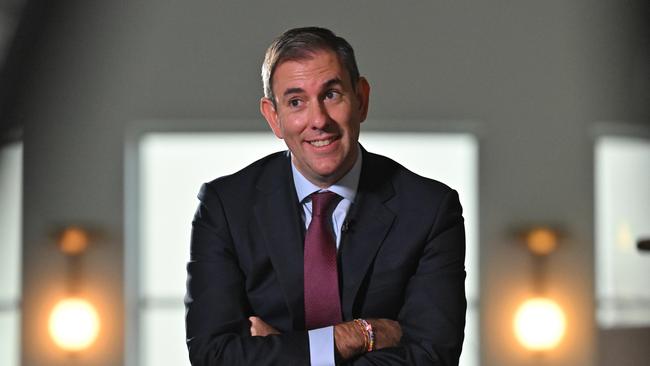
There is not a problem he cannot address or a long-term challenge he cannot meet. Jim will fix it. He has an answer for everything. He has taken command of the government’s economic and political strategy and crafted a budget aimed at winning re-election.
Everybody gets an income-tax cut. Everybody gets a rebate on their power bills. Wages are going up. So is rent assistance. Student debts are cancelled. There is more money for education, health, aged care, transport, housing and defence. And the inflation crisis is all but over.
That is the “here-and-now”. There is also “the decades to come” with a bold plan to invest $22.7bn over 10 years via the Future Made in Australia policy to benefit from the decarbonisation of the global economy and build economic “security and resilience”.
And he is promising to do it all while preaching the virtues of fiscal “repair” and “restraint”, delivering a second budget surplus of $9.3bn this financial year, reducing gross debt and banking 82 per cent of revenue upgrades over the forward estimates.
There are heroic assumptions in the 2024-25 budget, not least inflation falling to 2.75 per cent and within the Reserve Bank’s target band. Chalmers insists his cost-of-living relief is not inflationary but if the central bank disagrees, it will mean more pain with higher interest rates.
Make no mistake, Chalmers is steering the government’s broader political strategy. It began with revised stage 3 income tax cuts, delivering benefits for all taxpayers and an average $1888 tax cut in 2024-25. This redesign was achieved despite opposition from some ministers, worried about breaking an election promise.
The broader messaging of the budget – “relief, restraint, reform” – was also developed by Chalmers and this approach was set as a broad strategic direction for the earliest cabinet discussions about the budget.
But the messaging is tricky. The Treasurer is putting more money in taxpayer pockets as “relief” while promising it is not inflationary and insisting on “restraint” yet is actually increasing spending over the forward estimates. Chalmers could be accused of purchasing a reduction in inflation with energy rebates and increased rent assistance.
Chalmers, confident and assured, is also inventing a new economic “orthodoxy”, he told me last week. He has come up with “a new growth model” to turbocharge public and private investment in the economy. The Treasurer argues it is about accepting “the world has changed” and, therefore, the drivers of economic growth have changed too.
In the 1980s and 90s, Labor blazed a different trail to turbocharge growth. Bob Hawke and Paul Keating culled Labor’s sacred cows and embraced less market intervention, privatised public enterprises and reduced the size of government. Chalmers is, at heart, a market interventionist and is expanding the size of government.
Keating, as Treasurer, reduced government spending from 27.5 per cent of GDP in 1984-85 to 22.9 per cent in 1989-90. Chalmers has lifted spending from 24.5 per cent of GDP in 2022-23 to 26.6 per cent in 2025-26, and it is estimated to remain at 26 per cent until 2027-28.
Chalmers’ back-to-back surpluses should have been maintained, insisting on real fiscal restraint as budget virtue, not spending more than you earn. Instead, Chalmers is estimated to deliver cumulative deficits of $112.8bn over the forward estimates.
But Chalmers has his own economic model and approach to budget management. It is about more market intervention combined with more spending on social programs, and handouts for all. This is Labor’s new faith. Call it Chalmernomics.




Jim Chalmers is nothing if not ambitious.